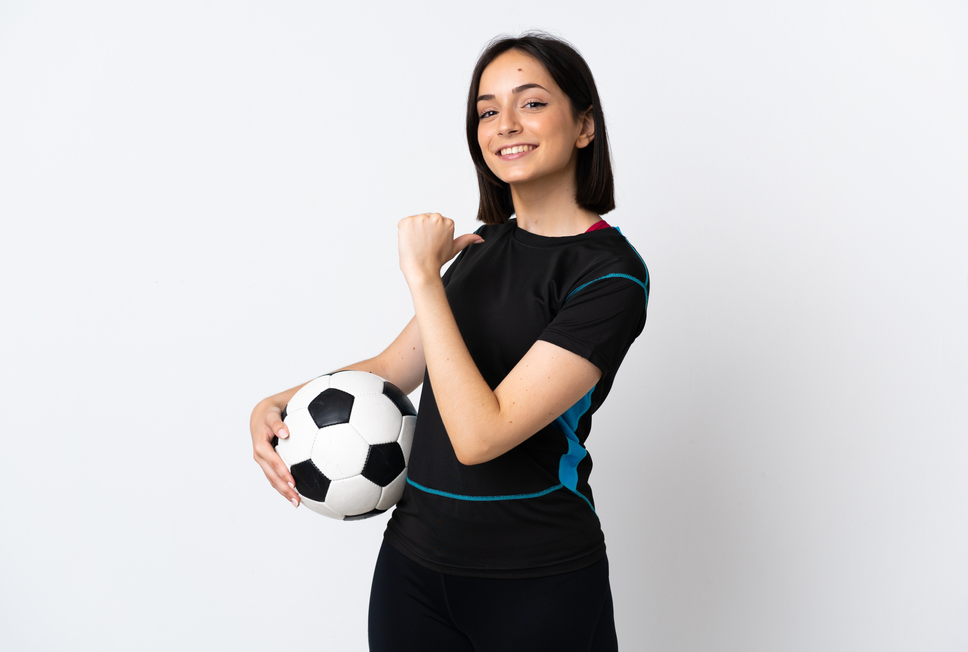In sports, athletes continuously seek the perfect tools to elevate their game. Soccer, a sport revered for its artistry and skill, relies heavily on the players’ ability to move swiftly, change direction rapidly, and maintain balance. As such, the choice of footwear plays a crucial role in their performance. While soccer cleats are explicitly designed for the sport, a daring question arises: Can you use football cleats for soccer?
The debate has ignited curiosity among players and enthusiasts alike, blurring the lines between two closely related sports. In this article, we will delve into the key differences between football and soccer cleats, and explore the potential benefits and drawbacks of using football cleats for soccer.
What is the difference between football cleats & soccer cleats
| Aspect | Football Cleats | Soccer Cleats |
| Stud Configuration | Typically have larger, widely spaced studs | Generally have smaller, numerous studs |
| Playing Surface | Designed for grass and turf fields | Designed for grass, turf, and artificial surfaces |
| Traction | Provide strong traction for quick sprints | Offer more agility and quick movements |
| Ankle Support | Often have higher collars for ankle support | Tend to have lower collars for better flexibility |
| Weight | Slightly heavier due to sturdier construction | Lighter weight for enhanced maneuverability |
Are soccer and football cleats the same
Football Cleats: Football cleats are designed for American football, which is played on a grass or turf field. These cleats typically have a heavier and bulkier construction to provide extra support and protection to the feet and ankles during high-impact plays. Football cleats often have a high-top design, which helps stabilize the ankles and reduce the risk of sprains.

Soccer Cleats: Soccer cleats, on the other hand, are tailored specifically for the sport of best soccer balls, also known as football in many parts of the world. Soccer is played on various surfaces, such as natural grass, artificial turf, and even indoor courts. Soccer cleats are typically lighter and more flexible than football cleats, designed to promote agility, speed, and precise footwork. They come in various styles, including low-cut, mid-cut, and high-cut, to cater to different playing styles and preferences.
Key Considerations for Using Football Cleats in Soccer

- Traction: Football cleats are designed to provide traction on grass or turf, which is suitable for American football. However, the studs or cleats on football cleats are often longer and more widely spaced compared to soccer cleats. Especially on natural grass, where players must make fast, multidirectional movements, this can result in less ideal traction on a football pitch.
- Comfort and Fit: Football and soccer cleats are designed to fit differently due to the varying demands of the sports. Soccer cleats generally have a tighter fit to enhance ball control and minimize slippage within the shoe during rapid changes of direction. Football cleats, on the other hand, may have a looser fit to accommodate thicker football socks and provide extra protection.
- Ankle Support: Football cleats usually offer more ankle support due to their high-top design. While some soccer cleats also feature mid-cut or high-cut options for added ankle stability, most soccer players prefer the lower-cut styles to allow for greater freedom of movement during dribbling, shooting, and running. Using football cleats with high-top ankle support may hinder soccer players’ ability to execute these movements effectively.
- Injuries: Inappropriate footwear may make injuries more likely. Soccer cleats are made to suit the unique actions and needs of soccer players, including quick direction changes, abrupt stops, and continuous running. The level of support offered by football studs might not be as high, which could lead to ankle sprains or other problems.
Conclusion
Soccer cleats are purpose-built to provide optimal performance, stability, ball control, and manoeuvrability on various surfaces, including firm ground, soft ground, artificial turf, and indoor courts. They are designed to support the specific demands of soccer gameplay, such as quick changes in direction, sudden stops, and frequent running.
To ensure a better soccer experience, players are encouraged to invest in a pair of soccer-specific cleats that cater to the sport’s specific requirements. By using proper soccer cleats, players can maximize their performance, reduce the risk of injuries, and enjoy the game to its fullest potential.
FAQS
Can you use multi-sport cleats for both football and soccer?
Multi-sport cleats are designed to be more versatile and can work for both football and soccer to some extent.
Are there any alternative options if I do not have soccer cleats?
If you do not have soccer cleats, you can use regular athletic shoes with good traction on the appropriate playing surface.
What should I do if I already have football cleats but want to play soccer?
If you want to play soccer and already have football cleats, it’s better to invest in a pair of soccer-specific cleats for improved performance, comfort, and safety on the field.

Sophia Jackson is an expert writer and avid soccer enthusiast. With a passion for the game and a wealth of knowledge about soccer balls, she’s dedicated herself to providing comprehensive guides and useful information for soccer players of all ages and skill levels

